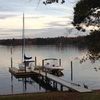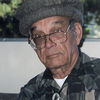Tubes
Jun 3, 2016 11:10:59 #
What are the feelings about extension tubes for macro photography? Are there some better than others? I noticed they come in sets of three some higher magnification than others. Which would be best? Thanks!
Jun 3, 2016 11:19:15 #
Big Bill
Loc: Phoenix, AZ
I use a Kenko set with my 7D.
These have the electrical pass-through contacts, so control over the lens is maintained in the camera.
If you are asking which tube of the set is best, I would say that depends on the effect you desire. Any one, or combination of two or all three will give varying results of the macro effect.
If you're asking which set is best, I would say get one that works with your lens mount (!) and has the pass-through contacts.
It seems to me that Kenko is used by many here, so that might be a good choice for you.
These have the electrical pass-through contacts, so control over the lens is maintained in the camera.
If you are asking which tube of the set is best, I would say that depends on the effect you desire. Any one, or combination of two or all three will give varying results of the macro effect.
If you're asking which set is best, I would say get one that works with your lens mount (!) and has the pass-through contacts.
It seems to me that Kenko is used by many here, so that might be a good choice for you.
Jun 3, 2016 11:19:27 #
Jun 4, 2016 06:41:55 #
By moving the lens a little further away from the image plane, extension tubes allow for a lens to focus closer than it otherwise can (while eliminating the ability to focus to infinity). There are no optical components so no possible degradation of the image quality either. And, as @Big Bill points out, having a set with the electrical contacts does make things easier when it comes to exposure (and auto-focus if feasible).
The reason extension tubes often come in sets is that the amount of extension you use will impact just how much closer you can focus with a given lens. More extension leads to the ability to get closer to your subject; just how close you will be able to get for a given amount of extension depends completely on the focal length of the lens itself, and will probably require some experimentation.
Generally speaking, you'll want to use them with telephoto (or perhaps normal) focal length lenses; the longer the focal length the more "working distance" you can achieve - this is how far away from the subject you can be to get a given size on the image chip. Just as an example (and I am making up numbers here just to show the concept), if you put a 12MM extension tube behind a 100MM lens you might fill the frame with a 1" tall flower by positioning your camera 1 foot from it, but that same extension on a 300MM lens might allow you to stand 2 feet back and get the same image of that flower. By getting further back, though, you have more options with lighting, for example.
The "downside" to extension tubes is that there is a loss of light coming through to the imaging chip (kind of like a 1.4 teleconverter loses one stop of light when used, but for different reasons) - but of course you camera's meter will accommodate that so it just translates into a need to use a slower shutter speed (or larger aperture - though with the extremely shallow depth of field in macro shooting a wider aperture might not be optimal). Also, they take a little more effort to use - you have to remove the lens, put on the tube(s) and then place it all back on the body - a bit more juggling than, say, using close-up lenses (which are clear filter-looking optics that screw on the front of the lens like a filter so don't require lens removal and also have zero light loss).
As for some tubes being "better" than others - since all of them are basically hollow cylinders (i.e. - no optical elements to worry about) it's a matter of mechanical quality - and like everything else in life, there are cheaper tubes where the mounting flanges might jiggle or come loose over time (or worse yet, leak light) and pricier tubes that are just more robustly built. I'd say most of the major brands are pretty decent - cheap Chinese stuff on eBay might be iffier - but then again worth trying for experimentation purposes.
The reason extension tubes often come in sets is that the amount of extension you use will impact just how much closer you can focus with a given lens. More extension leads to the ability to get closer to your subject; just how close you will be able to get for a given amount of extension depends completely on the focal length of the lens itself, and will probably require some experimentation.
Generally speaking, you'll want to use them with telephoto (or perhaps normal) focal length lenses; the longer the focal length the more "working distance" you can achieve - this is how far away from the subject you can be to get a given size on the image chip. Just as an example (and I am making up numbers here just to show the concept), if you put a 12MM extension tube behind a 100MM lens you might fill the frame with a 1" tall flower by positioning your camera 1 foot from it, but that same extension on a 300MM lens might allow you to stand 2 feet back and get the same image of that flower. By getting further back, though, you have more options with lighting, for example.
The "downside" to extension tubes is that there is a loss of light coming through to the imaging chip (kind of like a 1.4 teleconverter loses one stop of light when used, but for different reasons) - but of course you camera's meter will accommodate that so it just translates into a need to use a slower shutter speed (or larger aperture - though with the extremely shallow depth of field in macro shooting a wider aperture might not be optimal). Also, they take a little more effort to use - you have to remove the lens, put on the tube(s) and then place it all back on the body - a bit more juggling than, say, using close-up lenses (which are clear filter-looking optics that screw on the front of the lens like a filter so don't require lens removal and also have zero light loss).
As for some tubes being "better" than others - since all of them are basically hollow cylinders (i.e. - no optical elements to worry about) it's a matter of mechanical quality - and like everything else in life, there are cheaper tubes where the mounting flanges might jiggle or come loose over time (or worse yet, leak light) and pricier tubes that are just more robustly built. I'd say most of the major brands are pretty decent - cheap Chinese stuff on eBay might be iffier - but then again worth trying for experimentation purposes.
Jun 4, 2016 06:42:37 #
CharleneT wrote:
What are the feelings about extension tubes for macro photography? Are there some better than others? I noticed they come in sets of three some higher magnification than others. Which would be best? Thanks!
I'm perfectly satisfied with my $10 manual tubes. When I get down to just inches from the subject, I prefer manual focus and exposure, anyway. Spend ten bucks, experiment, and get the auto set, if necessary.
All the tubes do is put additional space between the lens and the camera, so "quality of image" isn't an issue.
One tip about the manual extension tubes. There is a small silver button to disconnect them from the camera, and many members have posted that they couldn't get the tubes off their cameras. You have to push that button a certain direction, rather than straight down. Do that, and the tubes come right off.
Jun 4, 2016 07:14:20 #
I have always used Kenko, there are cheaper ones but usually don't work as well or break down after just a little use.
Jun 4, 2016 08:51:32 #
CharleneT wrote:
What are the feelings about extension tubes for macro photography? Are there some better than others? I noticed they come in sets of three some higher magnification than others. Which would be best? Thanks!
I keep seeing Kenko's are great!!!
Having been tried a set for over a year and constantly having to put pressure on the camera or lens just to keep the electrical connection I purchased a set of three Nikon tubes, @ almost twice price, they have a much better feel, don't rattle when installing etc. being manual I don't have to worry about losing connections.and or the weight of the camera or lens tearing loose from the plastic. You do need a lens with manual App. ring, since i shoot manual anyway one more adjustment is not worry. Cameras: Nikon D800,Nikon D7100 & (Nikon D300 now retired) Lens: Nikkor 200mm macro/w triopod mount on lens.
IMHO Kenko's are almost junk!!!
Jun 4, 2016 09:51:28 #
When I first started doing macro work I used a set of Kenko tubes and they were awesome. I then graduated to Nikon tubes because I was regularly shooting macro and wanted something less fussy. Like manglesphoto writes I started to have to hold and press the lens to get reliable electrical connections.
I now have a Nikon 105mm and a Nikon 70/180mm macro lens. Tubes are much better than magnifying filters but they still have limitations. Dedicated macro glass is better than tubes, but need to justify the cost.
I now have a Nikon 105mm and a Nikon 70/180mm macro lens. Tubes are much better than magnifying filters but they still have limitations. Dedicated macro glass is better than tubes, but need to justify the cost.
Jun 4, 2016 12:01:04 #
CharleneT wrote:
What are the feelings about extension tubes for macro photography? Are there some better than others? I noticed they come in sets of three some higher magnification than others. Which would be best? Thanks!
I used extension tubes without glass. You still get the magnification depending how many you use.
Jun 4, 2016 13:09:02 #
gvarner
Loc: Central Oregon Coast
Might want to consider a +1 or +2 diopter lens if you're using a zoom. The two element ones are the better quality. Nikon has some good ones. They also allow focus at infinity, while tubes don't. Even the cheaper single element ones are decent quality it you keep your main subject area in the middle. At least that's what I've read.
Jun 4, 2016 14:41:03 #
amfoto1
Loc: San Jose, Calif. USA
CharleneT wrote:
What are the feelings about extension tubes for macro photography? Are there some better than others? I noticed they come in sets of three some higher magnification than others. Which would be best? Thanks!
My feelings are... Get a set and don't leave home without it!
For use with most modern electronic lenses, you definitely want the type of tubes that support auto focus and aperture control. The really cheap ones (under $25) without electroinc contacts are just fine with older lenses that have fully manual focus and aperture control, but are a real pain in the arse to use with modern electro-mechanically controlled lenses. It is well worth the extra cost of the electronic type, if planning to use them with modern types of lenses that require it. Often macro is more easily done with manual focus anyway. So that's not the concern. Aperture control is much more of a problem with the cheap "dumb" tubes. There is a work-around, but essentially you have to uninstall/re-install the lens every time you need to adjust the lens aperture and some of your auto exposure modes won't work with them (On most cameras Aperture Priority AE, Manual with Auto ISO, and fully Manual modes will work... but Program AE and Shutter Priority AE won't).
The Kenko set is among the best available and sells for about $130 US right now (it was close to $200 a couple years ago). Depending upon the system, those are pretty comparable to camera manufacturers' own, except the Kenko are a lot less expensive. The Kenko set of three includes 12mm, 20mm and 36mm, that can be used singly or in combination for seven different amounts of extension.
Opteka is now offering a set that has the electronic contacts, but is a little cheaper, a bit more plasticky and little more lightly built. It also includes 12mm, 20mm and 36mm. I think it's being sold under several different brand names. These sell for around $75.
Zeikos makes two versions that are even cheaper, more plasticky. Their set includes 13mm, 21mm and 31mm and sells under a whole bunch of different brand names. One version from Zeikos has metal bayonet mounts (approx. $65), while an "economy" version has plastic bayonets (sometimes under $50). I'd only use the latter with lightweight lenses and if I only planning to use them infrequently. I doubt they'd hold up to long term, extensive usage and just wouldn't trust them with a heavier camera or lens.
You don't mention what system of cameras you have and different things may be offered and prices might vary, depending upon what you shoot.
Canon, for example, only sells individual tubes in two sizes: 12mm and 25mm. The larger one is more expensive than the entire Kenko set (which are very similar design and build quality). The Canon tubes are high quality and support all lens functions. The current "Mark II" variant works with both EF and EF-S lenses ... So basically all 125 million Canon lenses made the past 25+ years. Note: the original or "Mark I" version, which was discontinued a few years ago, only works on EF lenses (and there are probably only about 100 million of those
 ). Not a concern if buying new, but you still can find a lot of the older version selling used. The same is true to some extent with the Kenko and Zeikos.... older versions were only EF compatible, while more recent and current ones handle both EF and EF-S lenses. AFAIK, the more recently introduced Opteka have only ever been offered in an EF & EF-S compatible version.
). Not a concern if buying new, but you still can find a lot of the older version selling used. The same is true to some extent with the Kenko and Zeikos.... older versions were only EF compatible, while more recent and current ones handle both EF and EF-S lenses. AFAIK, the more recently introduced Opteka have only ever been offered in an EF & EF-S compatible version. Nikon offers three sizes of macro extension tubes, also sold individually: PK-11A 8mm, PK-12 14mm and PK-13 27.5mm. Nikon's tubes in most cases do not support auto focus, AFAIK, and they only support aperture control on certain lenses. So check compatibility if considering buying them. Kenko, Opteka and Zeikos all offer sets for Nikon that fully support AF and, I think, pretty much all forms of aperture control.
I don't know what is offered for Pentax, Sony, Olympus, etc., but it's probably similar.
Macro tubes are quite easy to use and in general don't degrade image quality because they don't have any optics inside.
Basically, the longer the lens focal length, the more extension you need to add to it to increase magnification significantly. So, for more common macro/close-up purposes they tend to be most useful with lenses between 50mm and 135mm focal lengths. Theoretically, to push it to full 1:1 magnification (i.e., "life size") a 50mm lens needs 50mm, or a 100mm needs 100mm of extension. etc. However, this doesn't take into account closer focusing capabilities already built into the lens, so usually somewhat less extension is actually needed.
Lenses 50mm and shorter tend to put you very close to subjects at higher magnifications. An extreme example, I used 12mm of extension on a 20mm lens (in order to get more depth of field, although at high magnification the background still blurs down quite a bit)... flower petals were in focus when they were touching the front element of the lens!
Extension tubes also can be used on longer focal lengths simply to make them closer focusing. I've often used a long extension tube or stack of several just to be able to get a little closer to small subjects, though nowhere near true macro magnification, with 300mm and even 500mm lenses that weren't particularly close focusing on their own.
Tubes can even be useful with macro lenses, to increase their magnification capabilities. Some compact macro lenses are only able to do 1:2 (half life size) on their own. Many others max out at 1:1... and there are times a bit more can be useful. (Some macro lenses go higher, such as a Canon 65mm I use that can shoot 5:1, but those are rare, rather expensive and somewhat specialized.)
I learned to use macro extension tubes a couple decades ago and ever since, with any system I've used, have always had at least one set in my camera bag. They're compact and lightweight, versatile and useful, and a relatively low cost accessory that's easy to use and able to produce good, interesting results. I shoot with Canon gear now and currently have a Kenko set and three Canon tubes (two 12mm and one 25mm... all Mark I, but I have few EF-S lenses so don't need the newer version).
Here's a photo of my six extension tubes alongside a relatively compact, vintage (manual focus and aperture) Tamron SP 90mm macro lens...
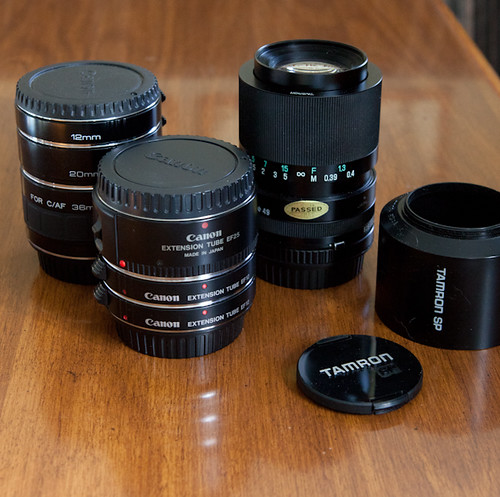
Some sample images taken with extension tubes on various lenses:
Vintage, manual focus Tamron 90mm macro lens (1:2) with 20mm extension...

Canon 20mm f2.8 lens (non-macro) with 12mm extension...

Canon 50mm f1.4 lens (non-macro) with 12mm extension (deliberately used large aperture to soften image and add some vignetting)...

Canon 70-200mm f2.8 lens (not macro) with 25mm extension tube (and fill flash)...
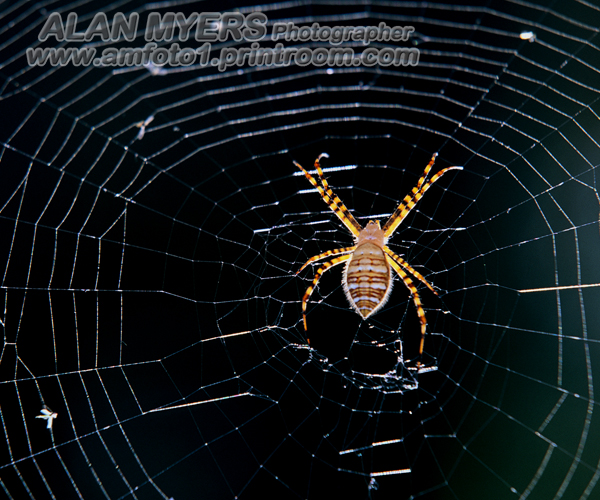
Canon 300mm f2.8 lens + Canon 1.4X II teleconverter with 20mm or 25mm extension tube...
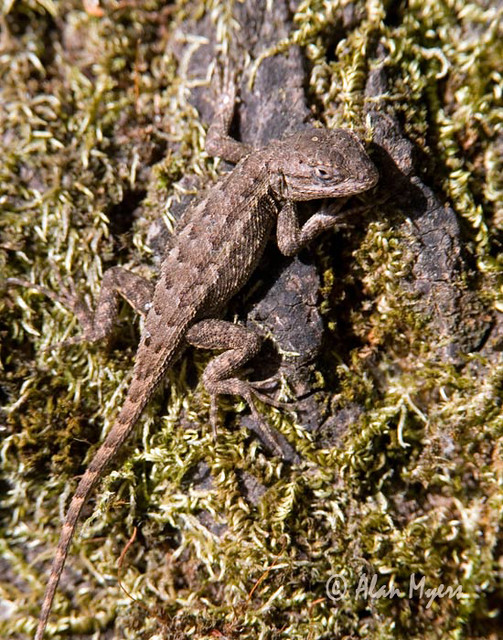
Canon 500mm f4 lens with 36mm extension tube (fill flash)...

Depending upon your particular system, you also might come across macro helicoids and macro bellows. These are also both forms of extension, except they are variable. Typical helicoid give a range of around 40mm to 65mm of extension.... while bellows can give much more to produce the highest possible magnification. Helicoid are just slightly bigger than an individual, 36mm fixed length tube. Bellows, on the other hand, are rather bulky and slower to work with. They also tend to be rather fragile.
This is a vintage bellows macro system I used in years past...

So, I highly recommend you get a set of tubes, experiment with them and learn what they can do in combo with your lenses. I always have some with me. They're close, but aren't fully a replacement for a true macro lens, which is typically faster to work with and usually offers even higher potential image quality (thanks to macro-specific design such as "flat field"). But macro extension tubes are a lot less expensive and smaller, lighter, easier to tuck into the corner of a camera bag than an additional, specialized macro lens.
Jun 4, 2016 22:56:10 #
My advice is do not use tubes. Get a good achromatic lens to mount on the front of your lens. Marumi makes a very good range of these.. Look for about a +3.. P.s Tubes are a good way to dust a sensor.
Jun 5, 2016 01:55:32 #
carl hervol
Loc: jacksonville florida
I also use the kenko but on a nikon thre best thing they do not take away the sharpness of your lens.
Jun 5, 2016 04:05:55 #
While you have gotten some good answers here and some that are questionable at best, I suggest posting or looking around in the "True Macro" section http://www.uglyhedgehog.com/s-102-1.html There are many very accomplished macro photographers (and new ones) there that are very happy to help and answer your macro related questions.
Jun 5, 2016 04:10:42 #
Manglesphoto wrote:
Hanging a 200mm macro lens unsupported from any set of tubes will eventually takes it's toll on them....some sooner than others though.I keep seeing Kenko's are great!!! br Having been... (show quote)
If you want to reply, then register here. Registration is free and your account is created instantly, so you can post right away.
